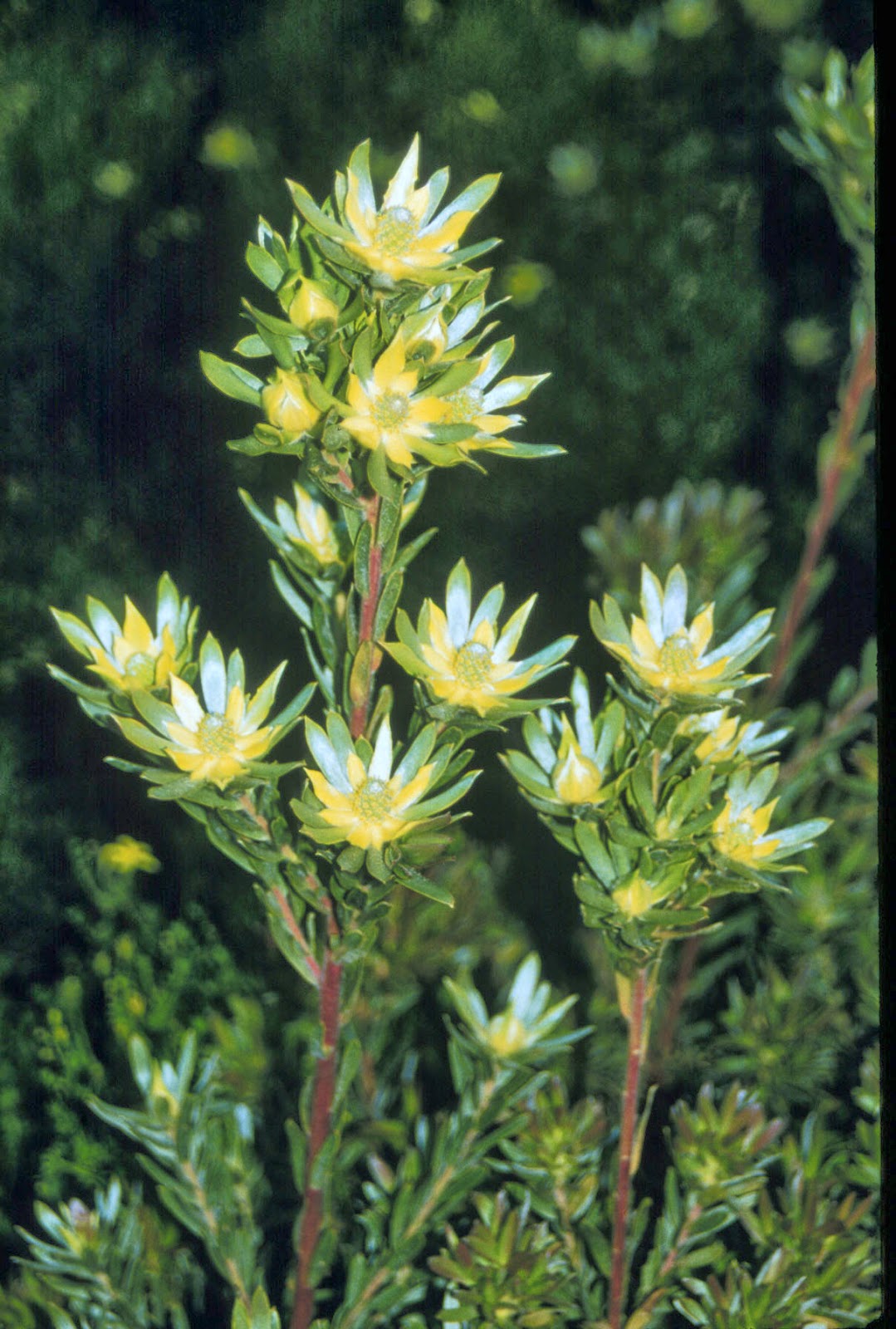 |
| A beautiful species of Mimetes, which I've seen identified as either M. cuculloides or M. fimbrifolius. |
 |
| In bud, the flowers of Protea cynaroides are enclosed in a cone-like series of bracts. |
The flowers of the Proteaceae are mostly small, with tubular, nectar-filled bases, and most often grouped into compact heads. Many are surrounded by petal-like bracts, turning them in to compound flowers resembling those of the sunflower family. The Kirstenbosch Botanic Garden has a comprehensive collection, but many can be seen in the shrublands of the Fynbos in the region around Capetown. As is my custom, I will allow them to speak for themselves. Enjoy!
| The bud of Protea cynaroides opens like a large sunflower to reveal the many small flowers packed inside. |
 |
| One has to view the mysterious, dark, Protea nana from below to see its flowers. It is pollinated by rats attracted by its yeasty odor. |
 |
| Protea scolymocephala looks like a member of the sunflower family (Asteraceae) until you examine it closely. |
 |
| Most members of the genus Leucospermum, like the L. glabrum pictured here, do not have enclosing bracts as do the Proteas. |
.jpg) |
| A pure yellow form of Leucospermum patersonii. |
 |
| The outer flowers of Leucospermum reflexum form a skirt at the base of the flower head. |
 |
| In Leucospermum oleifolium several small flower heads share a bed of yellowish bracts. |
 |
| In Leucodendron, like this L. elimense, the yellow-white bracts are conspicuous, but the flowers are not. |
 |
| Leucodendron argenteum has green bracts and yellowish flowers. |